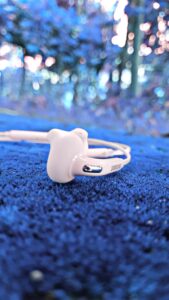Technology and Hearing-impaired Assistive Devices
Technology and Hearing-impaired Assistive Devices: Use the tools available, both new and old, to stay active and engaged in the things you love.
Learn about the various sorts of products and technology that might suit you.
Smoke Detection Systems
Smoke alarms can notify you if an alarm goes off in your home if you are deaf or hard of hearing.
This information applies to smoke alarms designed for use in private homes. Smoke alarms in public places are subject to different regulations.
If you are deaf or hard of hearing, a smoke alarm in your house will alert you to potential threats. These devices warn not only with loud noises but also with sensory cues explicitly intended for those with hearing loss, such as
Pads that vibrate
Pagers that vibrate
Lights that flash
Carbon monoxide (CO) detectors are included in some systems. Wireless smoke alarm systems connect smoke and heat detectors to sensory warning devices.
Some are part of a multi-alarm system that sends notifications through the doorbell, phone, and other alarms. Therefore, you need to find a remedy that fits your needs precisely.
What to Look for in a Smoke Alarm
A British Standard (BS 5446 Part 3: 2015) specifies fire and carbon monoxide alarms for deaf or hard of hearing people.
An audible smoke alarm for the hearing-impaired that has not been designed to this standard will provide essential protection (it will sound an alarm if it detects smoke, heat, or carbon monoxide). Still, it may not meet specific performance requirements or have the fail-safe features recommended by the standard.
Look for the following signs:
When you are awake, a bright flashing light will awaken you. You can either purchase additional flashing lights for different rooms or wear a vibrating pager to ensure you are alerted even in other areas of the house.
A vibrating pad is placed under your pillow (or mattress if strong enough) to wake you up while you sleep. The pad should be challenging to unplug or disconnect, and a warning light should illuminate if you do.
Enough variety to cover all areas of your home
A simple test button that allows the system to be tested regularly following the manufacturer’s recommendations.
If you have a mains-powered system, a battery backup will keep it running for at least 72 hours in the case of a power loss or if the system is unplugged from the mains.
CO (carbon monoxide) detector
A defective gas device, such as a boiler or gas fireplace, can produce lethal CO poisoning. If not properly ventilated, open coal stoves, wood burners, and multi-fuel systems can also be a source of carbon monoxide poisoning.
When there is a problem, a CO alarm sends out an early and loud warning signal.
We propose installing a CO detector that meets BS EN 50291 Part 1 standards and bears the BSI KitemarkTM emblem.
Here’s how to receive a free home fire safety inspection.
Members of the local fire and rescue service can come to your home and do a ‘Safe and Well check.
They can:
Look for fire hazards and advise you on how to decrease or avoid them.
Please get in touch with your local fire and rescue service to schedule a free visit. The National Fire Chiefs Council website can help you find your local service.
Please let the safety team know about individuals with hearing loss or who use hearing aids or a cochlear implant so they can recommend the most effective smoke alarm.
If you are profoundly or severely deaf, your fire department or local government may be able to provide you with a smoke detector at no cost.
The safety staff can help you with this.
Smoke alarms for freshly constructed homes and apartments.
All newly built houses and apartments (including conversions) in the United Kingdom must have interconnected smoke alarms on each floor.
This implies that if one alarm goes off, all others in the house or apartment will also go off. These systems, however, may not contain vibrating pads or flashing lights.
Infrared technologies, hearing loops, and FM systems
It is possible that the following aids will help you understand what is being said more clearly if you use a hearing aid.
Hearing aids
A hearing loop can help you hear spoken sounds more clearly if you wear a hearing aid, especially if you are far away. Your hearing aid is programmed to detect sound from the loop’s microphone rather than all sounds in the area. This helps to reduce background noise.
If you have a hearing aid, you can use it with a hearing loop by selecting the “hearing loop” mode. This may require the assistance of your audiologist.
There are hearing loops available: In many public places. A hearing loop can be identified by the “T” sign that is placed there.
Brought To You By Ear Wax Removal Milton Keynes
The post Technology and Hearing-impaired Assistive Devices appeared first on https://gqcentral.co.uk







Comments are closed